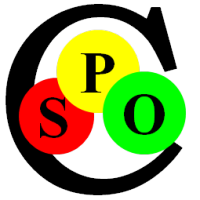Principles for managing Knowledge
This Page presents some Principles that help You to structure Knowledge well.
Build a granular Structure; avoid monolithic Documents
Documents are everywhere. Office Applications make it easy to produce large amounts and the Web is flooded with HTML Pages. But they are intended for certain Purposes:
- To wrap up a Transaction or present a Summary
- as a Message between separate People or Organizations
Historically, Documents have been used to persist any Type of mental Activity, but nowadays the Computer allows us to build better Tools. Relational Databases have been around for 40 years and they are a Foundation to build an integrated Knowledge Management.
Analysis is hard, Synthesis is easy
Analysis in our Sense means: breaking apart and structuring Information.
Despite the Decades and Money spent on artificial Intelligence, it is still not possible for a Computer to "understand" written or oral Language. Therefore Documents are opaque to them. Their best Effort is to extract some frequent Keywords and match them with Your Search Query on Google or Bing.
Synthesis means assembling Information and present them in a decent Form.
This is a Task that Computers can help a lot with, provided the Data is available in a granular Form.
Spoc-Web is an Application to model, collect, refine, edit and present Information of any Kind. Once this Information is captured in good Quality, it can be aggregated and reused in countless Scenarios.
Split up Data into atomic Properties and Relations
Even well-structured Documents with short Paragraphs are often not reusable enough. If You only want to reuse whole Paragraphs or Documents, You're fine though. But the best is, as with Database Design, to go down to the individual Fields and Relationships. These have to be atomic, i.e. already split up down to the Level they will be re-used. A good Example is People's Names: Do You want to use first and last Name individually? Then You need to split up the Name Field into two.
Build a Model for Your Data
Collecting Data without a Model renders it useless. A Model provides many Benefits:
- it provides a Structure and GUI to capture the Data, thus improving the Quality
- it describes the Data and allows to collect the Data with a better Understanding
- it connects to other Models and thus connects their Data



